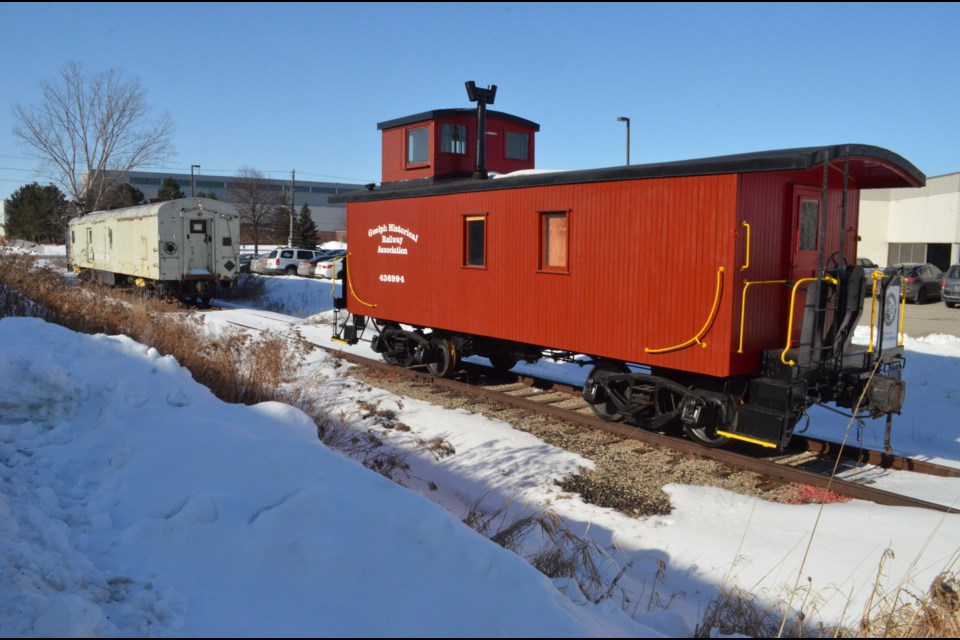The history and early industrial growth of Guelph can be directly tied to the expansion of the railway and preserving that heritage is a priority for members of the Guelph Historical Railway Association.
“It’s our mission because the railway history is very significant here and actually the whole world,” said GHRA restorations director Eric Repaci. “At one point in time railways pretty much had the majority of people working for them in every degree you can think of. It was very labour intensive.”
The Guelph Historical Railway Association was established in 1991 in response to the Canadian Pacific Railway terminating its lease on the Guelph Junction Railway, a stretch of line owned by the City of Guelph.
“Back then the assumption was that when CP gave up the lease, they were going to just tear up all the lines and make them all trails,” said Repaci. “Our group basically grew then. Our original goal was to operate a tourist and freight service but we didn’t get anywhere with the people that were in charge at that time.”
The Guelph Junction Railway was built in 1886 and was privately owned until 1908 when the city took ownership and leased it to CP.
The 38.6 km of track remains in commercial use and runs between the Guelph Junction near Campbellville and Guelph’s northwest industrial park.
Local entertainment promoter and entrepreneur John Caroll operated a tourist service, the Guelph Junction Express, on the rail from 2008 and 2011. When the service closed Caroll sold all of the equipment and GHRA had to refocus its efforts.
“It helped us when it was in operation because our group would ride the train and do all the support stuff and in return he would donate a portion of the ticket sales to us,” said Repaci. “When he left it kind of crippled us a little bit. Now, we’re not exposed as much either.”
The GHRA has since focused on accumulating and restoring historical artifacts associated with the railway and educating the public about local rail history.
“Our group was 120 members at one time,” said Repaci. “We have a basic core group now. We had a little increase in membership recently which is good. We are bringing in some younger people and we are always looking for new members. If members have trades and skills that’s even better.”
They rely on charitable donations and membership fees to fund their projects.
“It is a registered charity so if our group disbanded the collection and all other assets would go to another group or charity,” he said. “It is not something that is privately owned.”
There are about 30 members who attend the regular meetings and volunteer their time to raise donations and work on the restoration projects.
The two train cars in their collection were donated by the Canadian National Railway. The 1920 CPR wooden caboose is almost fully restored and they are half way through the restoration of a 1950’s CNR express baggage car. Both cars are stored on a stretch of rails that terminate at Elmira Road north of Speedvale Avenue.
In February of last year they began a fundraising campaign to purchase and move a 1928 CPR coach or passenger car. They have raised $4,000 toward the $3,000 purchase price of the coach and the $35,000 cost plus tax to move it.
“It is sitting right now up in Uxbridge,” said Repaci. “It is surplus equipment for the Durham-York Heritage railway group. They actually bought the original tourist train we had here in Guelph.”
When it is restored, the 80-ton, class-one coach will have seating for 80 passengers.
“It has one of the first so-called air conditioning systems before the mechanical air conditioner,” said Repaci. “They would pack the bunker with big blocks of ice and there would be space for air flow around it. As the train was moving the roof vents would pick up the air and circulate through the tanks then blow cold air through the floors. All of the windows open so if you take a ride on the train you can get the full effect of what it would have been like in that period of time.”
Repaci is tasked with applying for grants to purchase the coach and support other GHRA projects and he is hopeful that a renewed interest in rail as a greener and more efficient form of transport will translate to more interest and support for their projects.
“There is a lot of work to do but that doesn’t scare a group like ours because we are preservationists,” he said. “We bring all of our skills in. You see how the caboose has come out. When we first got it it was nothing like it looks now.”
To learn more about the GHRA visit: www.ghra.ca


